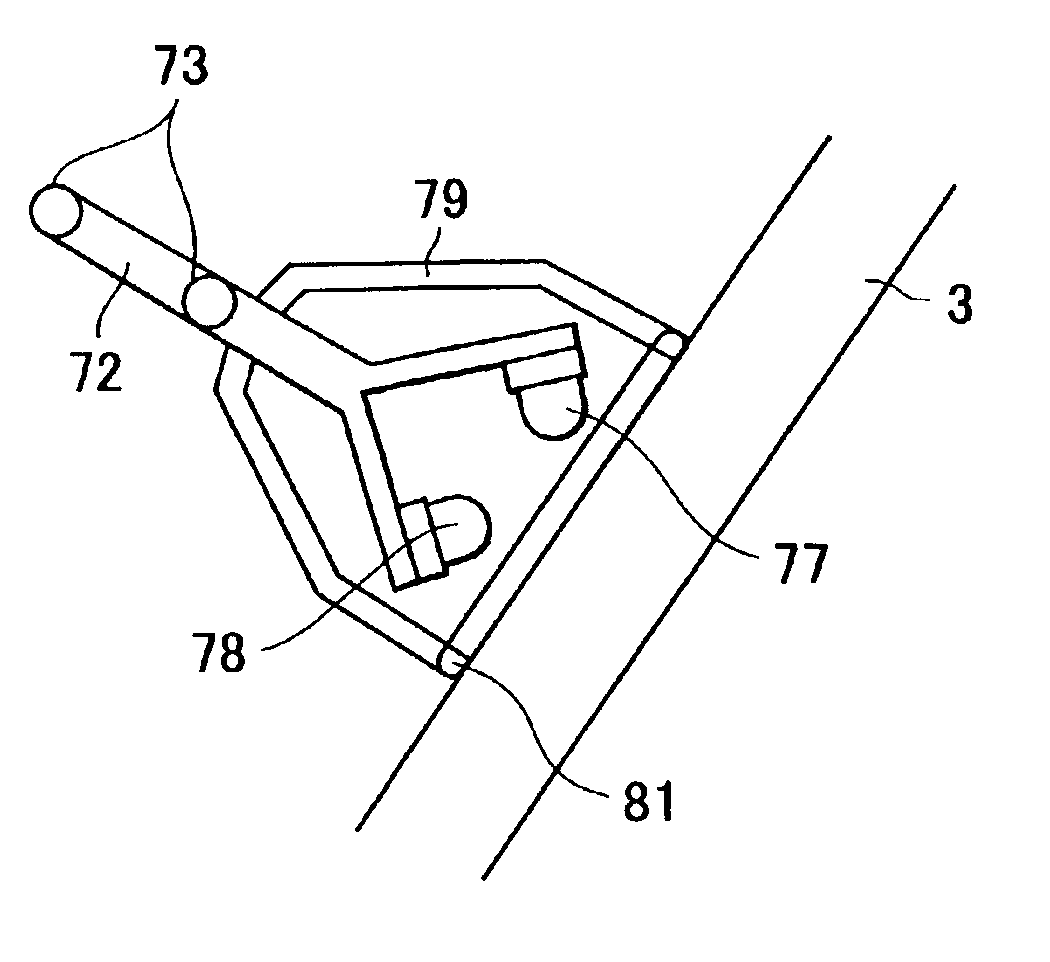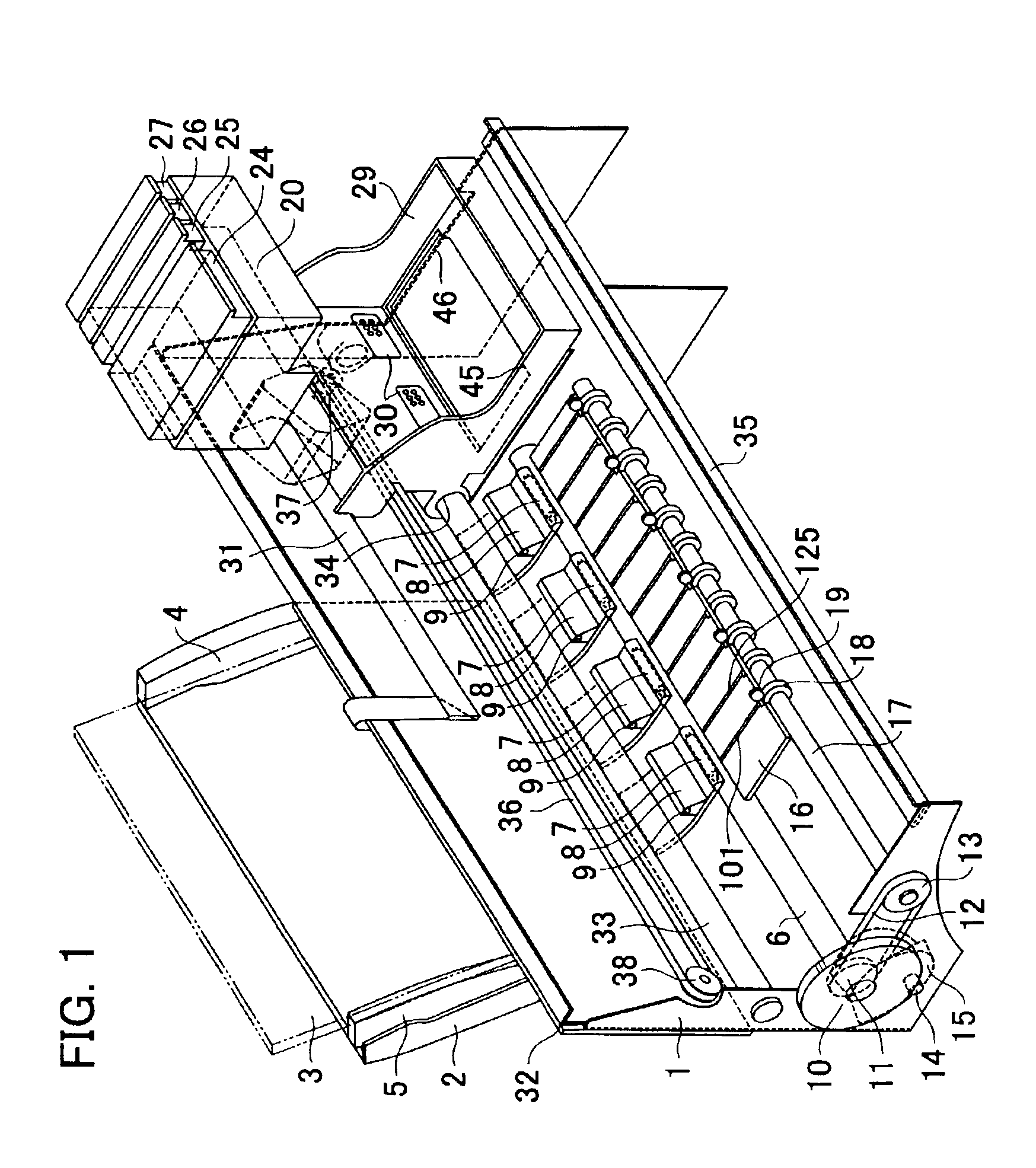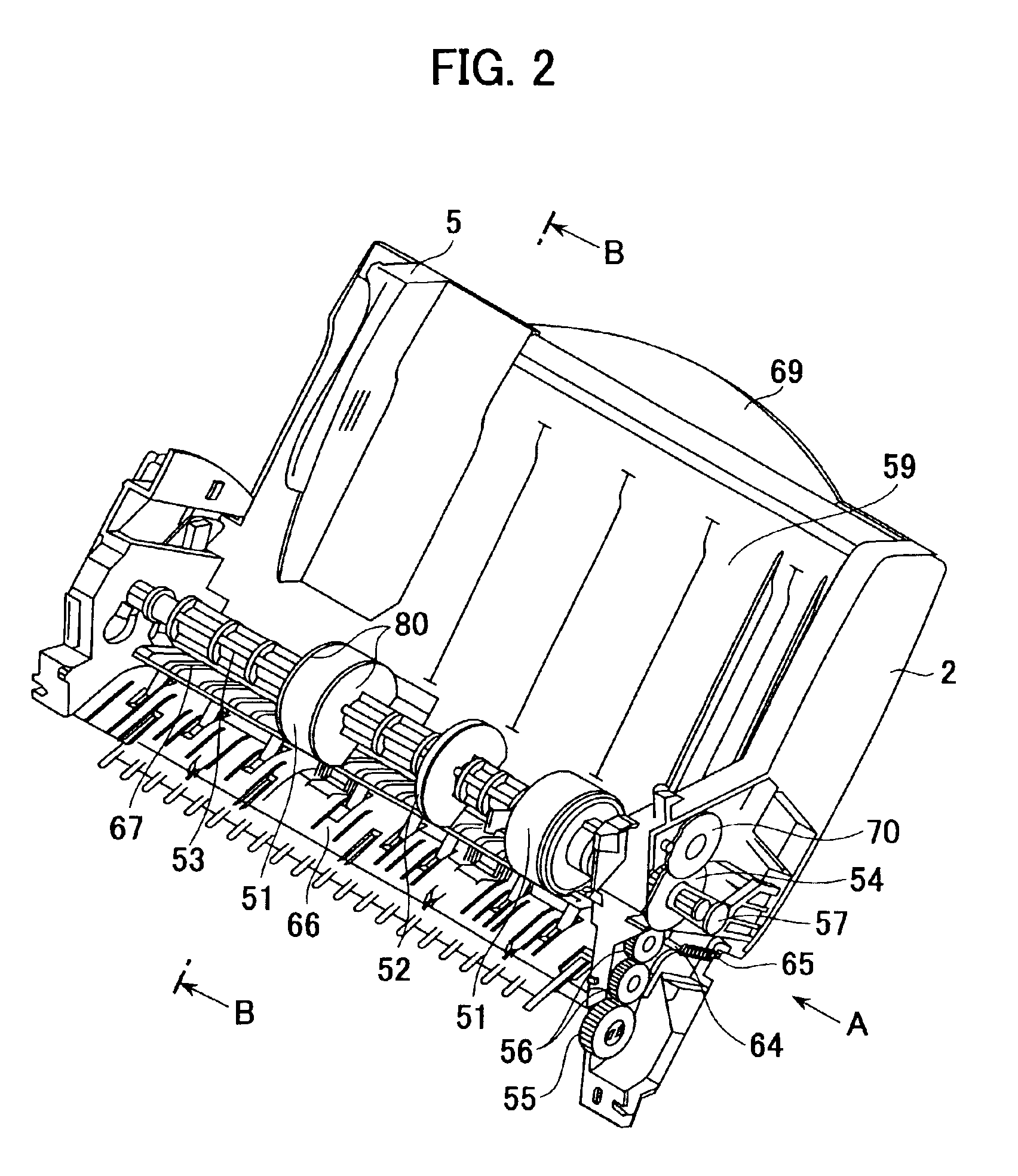Recording apparatus
a recording device and recording technology, applied in the field of recording devices, can solve the problems of low image quality of recorded output inefficient use of printers, etc., and achieve the effect of reliably detecting the type of recording media
- Summary
- Abstract
- Description
- Claims
- Application Information
AI Technical Summary
Benefits of technology
Problems solved by technology
Method used
Image
Examples
first embodiment
[0033]FIG. 1 is a general perspective view of a recording apparatus according to a first embodiment of the present invention.
[0034]As shown in FIG. 1, the recording apparatus has a chassis 1, which has a structure for supporting other components, and an automatic sheet feeder (hereinafter, abbreviated to ASF) base 2, which will be described later.
[0035]A sheet fed by the ASF is forwarded to the nips between a line feed (hereinafter, abbreviated to LF) roller 6 and pinch rollers 7. The surface of the LF roller 6 is coated so as to have a predetermined coefficient of friction. Both ends of each pinch roller 7 composed of rubber are rotatably supported by a corresponding pinch roller guide 8 such that the pinch roller 7 rotates freely. The pinch roller guides 8 are rotatable about corresponding rotating shafts 9 and the pinch rollers 7 are urged against the LF roller 6 by corresponding not-shown springs. When the leading edge of the sheet picked up by feeding rollers, which will be des...
second embodiment
[0059]FIG. 8 is a side view of a recording apparatus according to a second embodiment of the present invention, wherein like components as in the first embodiment are omitted.
[0060]An ASF base 200 shown in FIG. 8 has the same function as that in the first embodiment. A light-emitting device 201 and a photo receptor 202 detect the type of recording media based on the same principle as that in the first embodiment. The light-emitting device 201 and the photo receptor 202 are supported by a sensor-support slider 203. A shaft of the sensor-support slider 203 is guided by a hole formed in a slider casing 204 so as to move in the direction indicated by the arrow F shown in FIG. 8. The slider casing 204 is fixed to the side surface of the ASF base 200 with screws. The shaft of the sensor-support slider 203 is also inserted into a compression spring 205. The light-emitting device 201 and the photo receptor 202 are surrounded by a hood 207 having rollers 208 disposed at two places on the sid...
third embodiment
[0063]FIGS. 9A and 9B are side views of a cassette of a recording apparatus according to a third embodiment of the present invention, wherein FIG. 9A illustrates a state in which the cassette is loaded and FIG. 9B illustrates a state in which the cassette is unloaded. Recording media 301 are stored in a cassette 300 having therein a pressure-plate spring 302 and a pressure plate 304, which is urged upwards about a fulcrum 303 as a rotating axis. As shown in FIG. 9A, when the recording media 301 are fed, the surface of the uppermost recording medium 301 comes into contact with the surface of a feeding roller 305 by a not-shown cam. When the feeding roller 305 rotates clockwise in FIG. 9A, the recording media 301 are forwarded and only the uppermost one is separated and picked up by a separation claw 306. A light-emitting device and a photo receptor are disposed at the top of a sensor support 307 in the same fashion as in the first embodiment. Since a hood 308 has the same function as...
PUM
 Login to View More
Login to View More Abstract
Description
Claims
Application Information
 Login to View More
Login to View More - R&D
- Intellectual Property
- Life Sciences
- Materials
- Tech Scout
- Unparalleled Data Quality
- Higher Quality Content
- 60% Fewer Hallucinations
Browse by: Latest US Patents, China's latest patents, Technical Efficacy Thesaurus, Application Domain, Technology Topic, Popular Technical Reports.
© 2025 PatSnap. All rights reserved.Legal|Privacy policy|Modern Slavery Act Transparency Statement|Sitemap|About US| Contact US: help@patsnap.com



